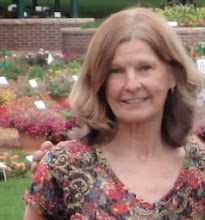I can't walk by the elegant mauve and gray Baumeister Building without rapping one of its columns with my knuckles. Each rap is answered by a gratifying metallic clunk because this building is a "Mesker" and that means it's faced by a "galvanized storefront system." All its lovely ornamentation that looks carved and handmade is actually pressed sheet metal, a combination of galvanized steel and cast-iron. A small plaque affixed to the column identifies it as such. " Mesker Bros, Front Builders" it says. The manufacture of metal fronts for buildings began in the eastern U. S. in the 1840s and by mid-century there were foundries throughout the United Sates. The builders of the Baumeister Building ordered its sheet metal facade from the Mesker Brothers Ironworks of St Louis. A builder chose a front from a catalog, had it shipped by railroad, and--voila--he had a ready-made, durable and attractive front ready to affix to the structure.
Also fabricated in metal, over the second story windows, is stamped big and bold that Max Baumeister built this structure and he did it in 1889. When it was first built the address in the city directory was listed as "between 2nd and 3rd" but now we find it by going to 27 West Main. Max Baumeister was a real estate and insurance agent in partnership with Harry Reynolds. You might expect that Mr. Baumeister would set up his own office in his handsome new building, but he worked from 8 E. Main and later he occupied space in the impressive Die Brucke building, which he also built.
I spent many enjoyable hours poring over old city directories in the library and was able to discover what businesses occupied the downstairs spaces and for how long. The Walla Walla Savings Bank moved in there in 1889, the year the Baumeister was built, but over the years these high-ceilinged, big-windowed stores were mainly occupied by sporting goods stores such as Meyer and Keeny, which was not only a place you could buy a bicycle, but also a "rentery." Their ad in the 1901 city directory promised "Sporting Goods, Guns, Ammunition, and Bicycles", and you could get advice about your choice of a gun from Pleasant Le Francis, "gunsmith." The tradition of sports shop was carried on by Jackson's, who in the 30's often photographed hunters posed with their trophy deer in front of the shop. The sign in the window behind the hunters in one photograph says "Bargains-Balloon Tire Bicycles, $31.95 and Up." Ann Hamada, whose colorful quilt shop, Stash, occupies one of the store fronts today, remembers Soper's Leather Goods as being there when she was a child. Soper's sold more than leather; it also carried sporting goods. Ann told me that a gentleman came into Stash one day and asked her if she'd noticed any bullet holes in the basement walls. He remembered doing some target practice down there when he was young.
Doug Saturno, who owns the Baumeister (and restored it with such care), met with me, talked about his building's history, and--best of all--gave me a tour of the offices upstairs that are accessed via a marble-lined stariway. The halls have high ceilings; the offices are spacious and gracious. I was able to see where a long list of dentists and lawyers and real estate agents had their practices. The office number I sought was 211 and I was gratified to see that its large, light main office had an enviable view of Main Street below. You see, I chose to write about the Baumeister Building because it has some personal significance for me. My husband Mark and I live in a 102-year-old home built by S. E. (Sam) King, an attorney who had his office in # 211 in the Baumeister for many years, starting in 1906. I like to imagine Sam walking to work from Thorne Street. I'm guessing he took the quickest route, which was north on First to Main. Sam King may have taken the streetcar on cold days; a 1910 postcard shows a streetcar running right in front of the Baumeister. But I expect he walked if he could--up a pleasant street of big shady trees and handsome houses and then turning left onto Main, and in a few blocks there he was at the Baumeister, a metal beauty of a building.
Thanks, Joe Drazan for the historic photo (1890).




No comments:
Post a Comment